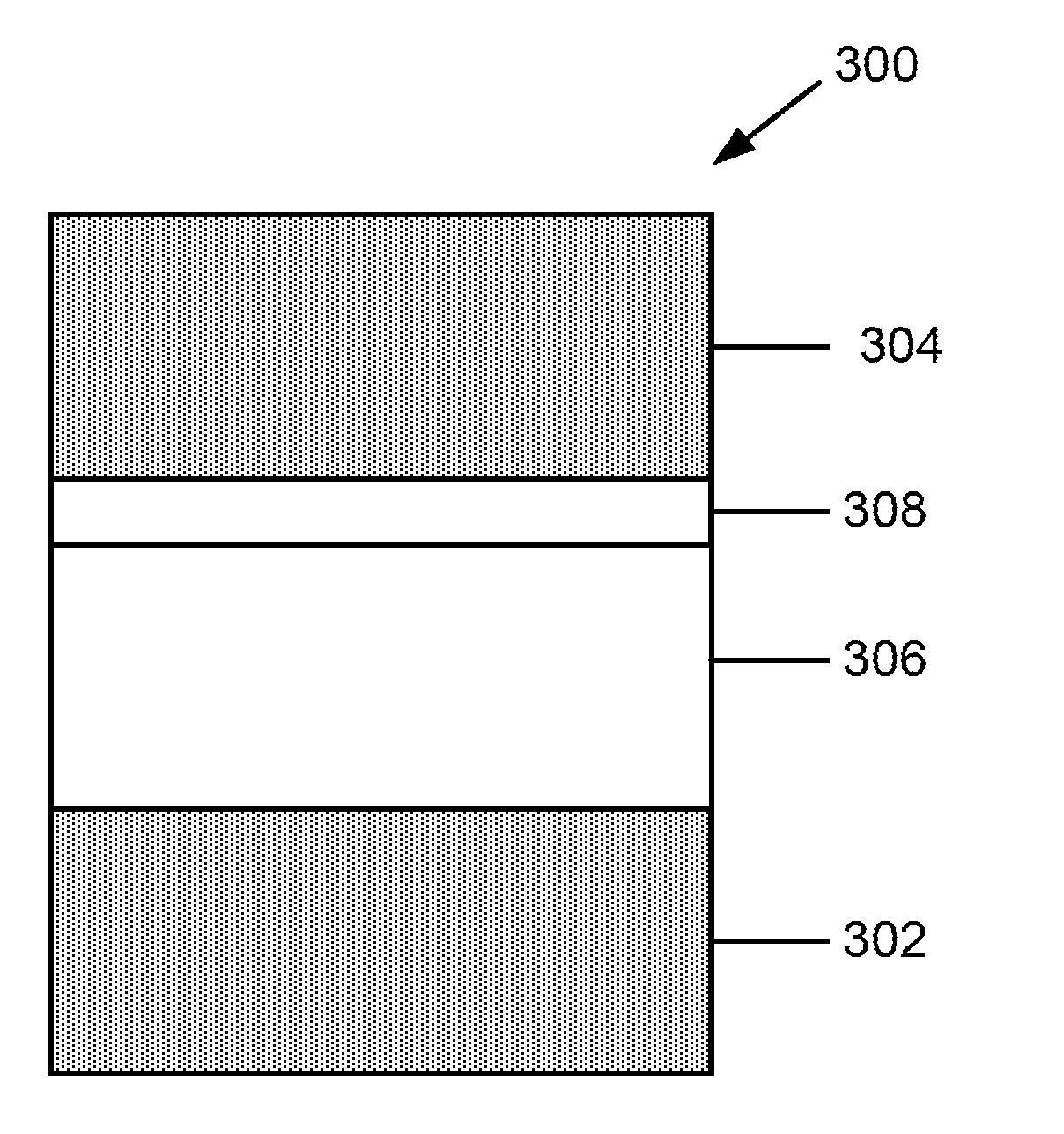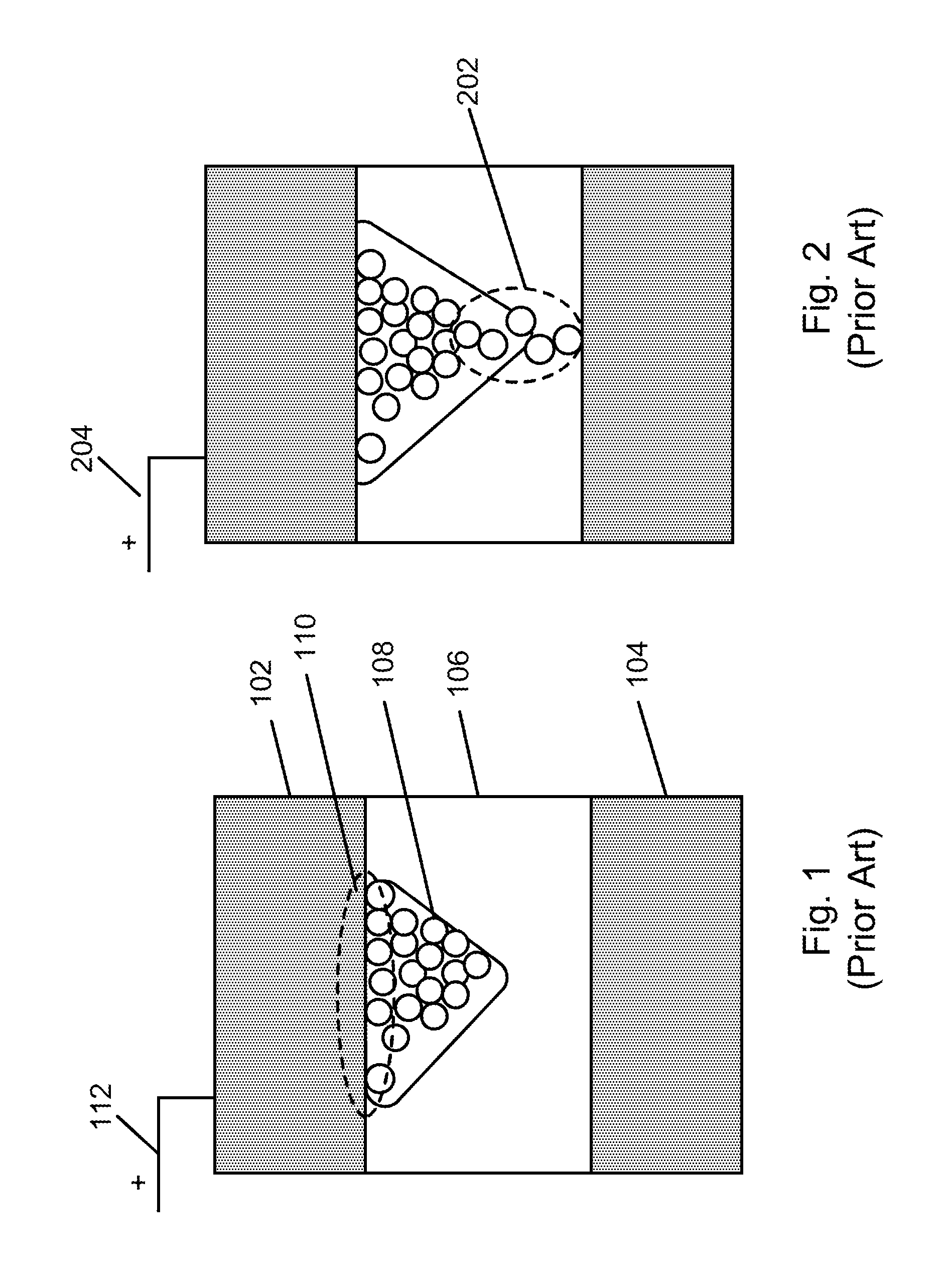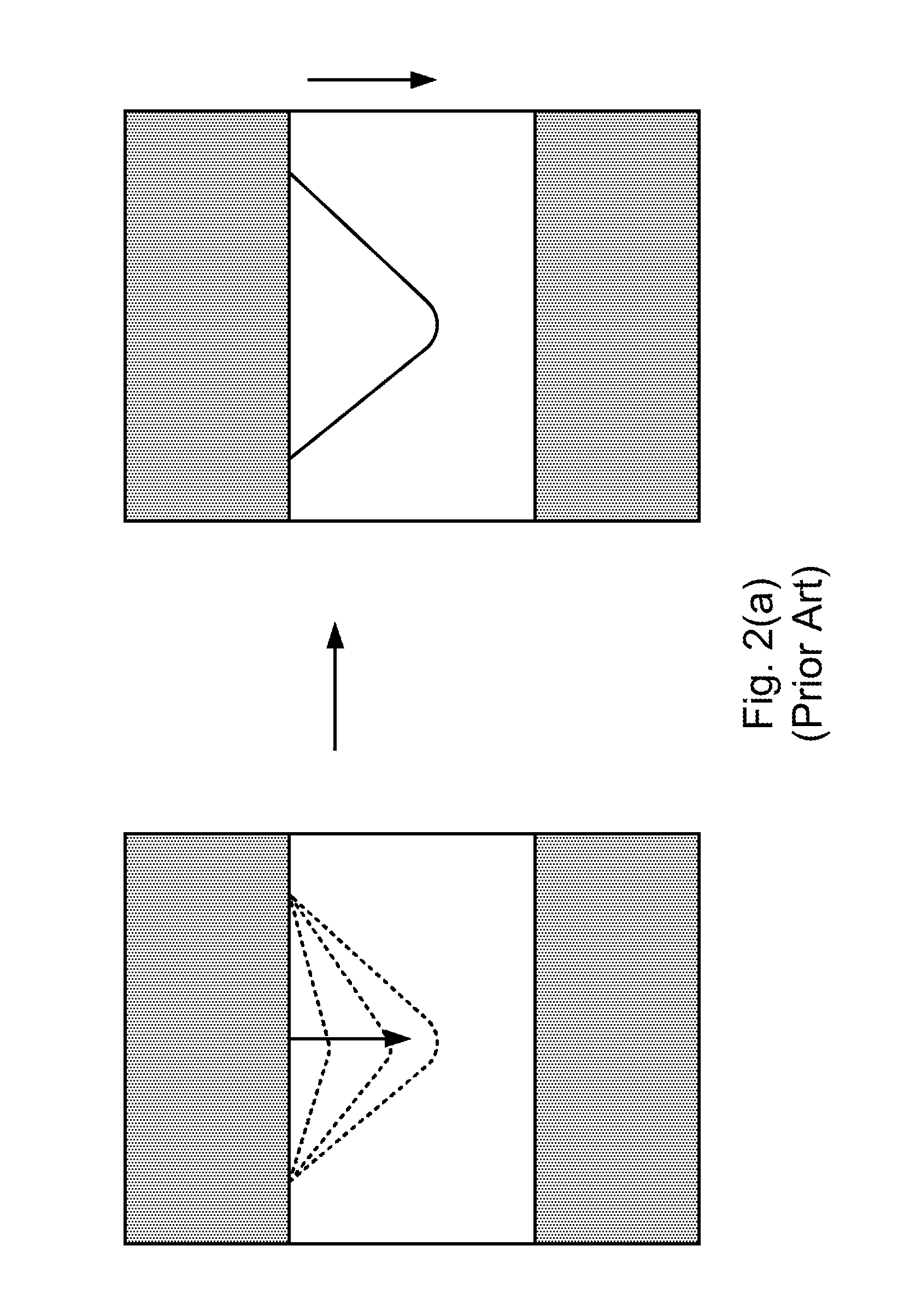Conductive path in switching material in a resistive random access memory device and control
a random access memory and switching material technology, applied in the direction of bulk negative resistance effect devices, basic electric elements, electric devices, etc., can solve the problems of increasing power dissipation, sub-threshold slope non-scaling, and reducing device performance, so as to achieve low forming voltage, broader range of applicability, and low leakage current
- Summary
- Abstract
- Description
- Claims
- Application Information
AI Technical Summary
Benefits of technology
Problems solved by technology
Method used
Image
Examples
Embodiment Construction
[0021]The present invention is related to switching devices. More particularly, the present invention provides a resistive switching device characterized by a well controlled electroforming process and a low leakage current. Embodiments of the present invention have been applied to fabrication and operation of a resistive random access memory device. But it should be recognized that the present invention can have a much broader range of applicability.
[0022]Due to the explosive growth in consumer devices, there is an ever increasing demand for memory device density. Data storage of current non-volatile memory devices are based on charges stored in a floating gate or a dielectric layer. Scaling of these devices is limited as these devices usually require a transistor device coupled to a memory cell. Further down scale of transistors may not be possible due to short channel effects and others.
[0023]Resistive switching in an amorphous silicon based resistive random access memory (RRAM) ...
PUM
 Login to View More
Login to View More Abstract
Description
Claims
Application Information
 Login to View More
Login to View More - R&D
- Intellectual Property
- Life Sciences
- Materials
- Tech Scout
- Unparalleled Data Quality
- Higher Quality Content
- 60% Fewer Hallucinations
Browse by: Latest US Patents, China's latest patents, Technical Efficacy Thesaurus, Application Domain, Technology Topic, Popular Technical Reports.
© 2025 PatSnap. All rights reserved.Legal|Privacy policy|Modern Slavery Act Transparency Statement|Sitemap|About US| Contact US: help@patsnap.com



